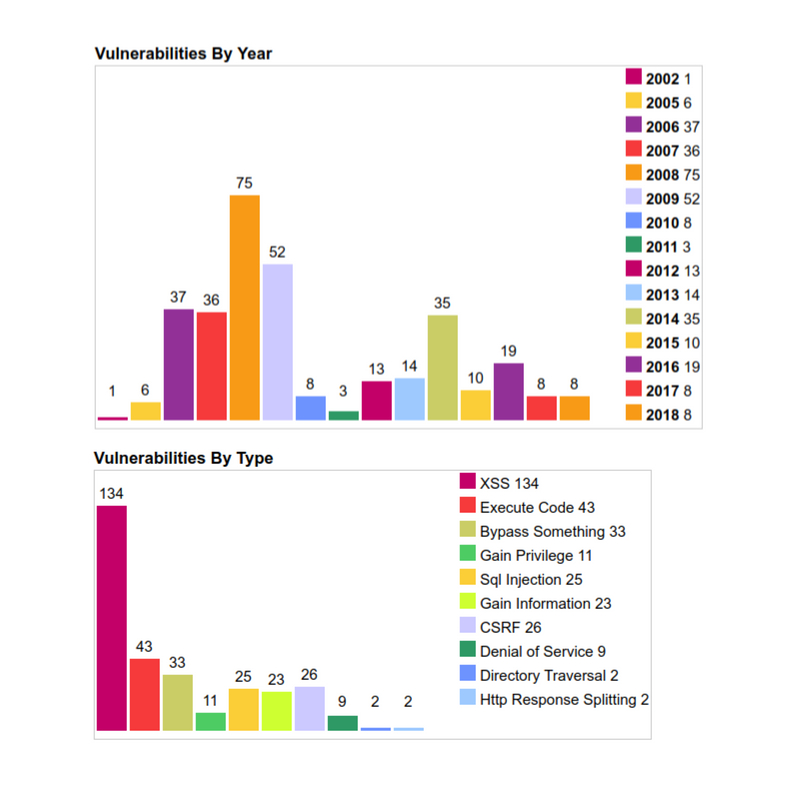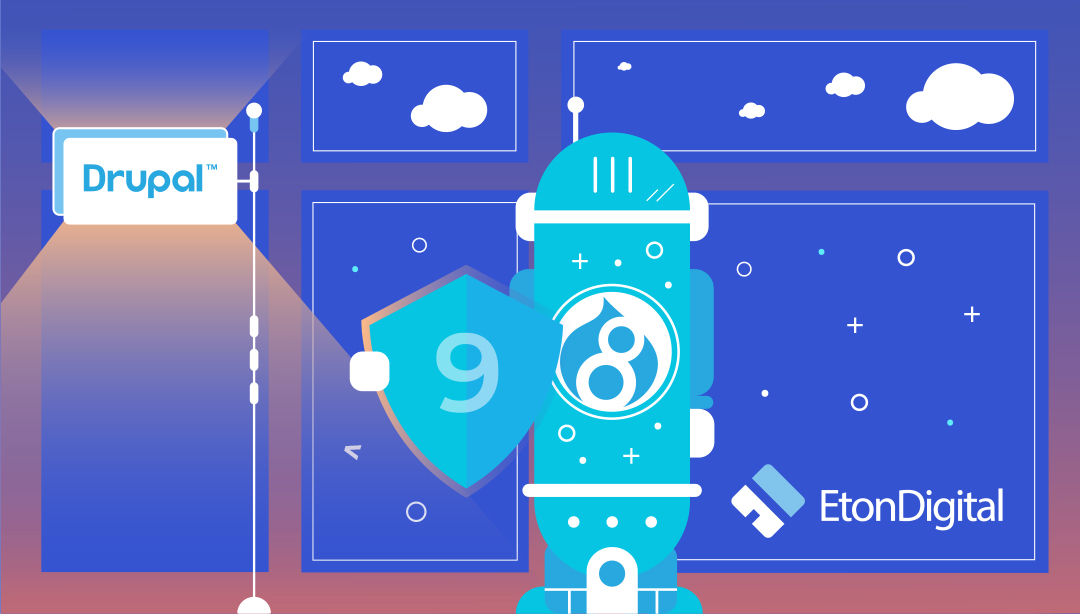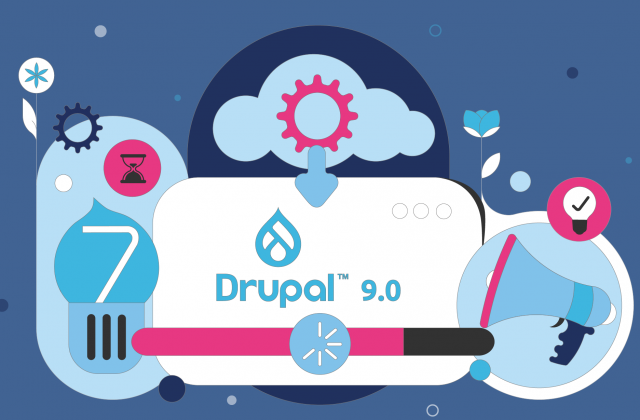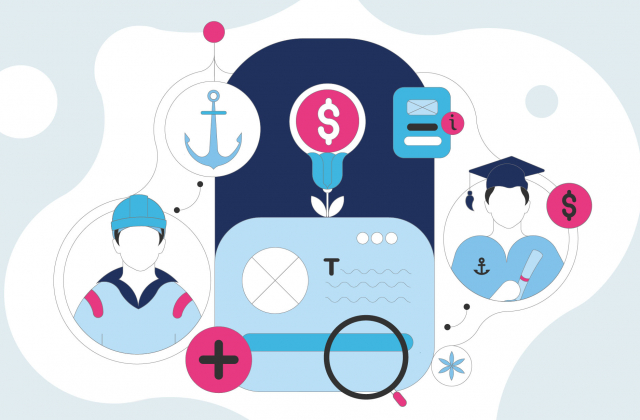When it comes to security, the best thing one can do is to implement the best security practices to protect oneself. However, what about the built-in security features provided by the CMS? Drupal security features are the reason many organisations, whether small or large, NGOs, brands, governmental websites, global enterprises or colleges, use Drupal.
But many are still in doubt whether and how much Drupal is safe and secure. Drupal is one of the world’s most well developed Open Source content management systems. Moreover, Drupal 8 came not only as of the biggest update but also with a stronger security program.
When it comes to security, we can take a look at Drupal vulnerability statistics.

In general, Drupal is rated as the most secure CMS. We want to help you understand why Drupal is considered to be the first business choice when it comes to security.
Below we have listed all Drupal security features that you need to know before you choose your CMS.
Some might be too technical, but we’ll try to explain it in the best way.
#1 Engaging Community That Grows By Day
The community is one of the largest and most engaging communities in the world. It counts more than 1 million passionate and dedicated developers, trainers, designers, coordinators, Drupal enthusiasts, strategists, and editors.
Why is community important?
The larger and more dedicated the community, the better the technology. These 1M people work collectively and continuously to build the platform, review the code, and functionalities, create Drupal themes, and shape the technology. Thus, any vulnerability or errors will be dealt with promptly.
#2 The Security Team Always On The Watch
The security team was formed in 2005 and gathers around 35 security experts that are based all around the globe. This team of all-volunteers analyzes and identifies every security vulnerability and error in the Drupal Core.
Moreover, besides making sure the Drupal core is secure, they also review and analyze the community-contributed modules.
For example, you can enhance security with the following modules:
- Login Security – The module adds more features that control the access control and further enhances the security of the core
- Security kit – The module protects the website from cross-site scripting, cross-site request forgery, click-jacking, and etc.
- The Security Review – Increase the security of the website with automating testing
- Two-factor Authentication (TFA) – The module provides extra security with code authentification on mobile;
In particular, these are the team responsibilities and goals:
- Resolving the reported security issues in a Security Advisory
- Providing assistance for contributed module maintainers in resolving security issues
- Providing documentation on how to write secure code
- Providing documentation on securing your site
- Helping the infrastructure team to keep the drupal.org infrastructure secure
Also,
The security team coordinates security announcements in release cycles and evaluates whether security issues are ready for release several days in advance.
The team also notifies the public on all security-related announcements and information about the security patches.
#3 Drupal Security Standards Are Set By The Open Web Application Security Project
You have probably heard that Drupal is secure by design, but what does this mean? The design of the CMS is in such a way that meets all security standards of the Open Web Application Security Project (OWASP).
The organisation was founded in 2001, and since then, it has been an unbiased source of information on best practices for developers and security experts. It acts as an active body that advocates open standards and utmost software security.
They have identified the top 10 security risks so that the future risks of security can be addressed properly. Needless to say, each of these OWASP securities risks Drupal is addressing effectively.
#4 Highly Stable & Secure Source Code
Drupal core itself is highly secured as it undergoes great pre-review before any update. Moreover, given the vast community and dedicated security team, the core is audited more than any other code in the world. This is in the first place a warrant of its security.
The team thoroughly review every module and only approves it and makes it available to the community after it meets the security standards.
Why is this important for future Drupal clients?
With the highly secured Drupal core, the sites built properly on Drupal can be patched within minutes. This decreases the risks of broken features or any errors to a minimum.
Utilizing the proper code practices and standards, the Drupal core is in fact never touched by developers, the site can be customized and fixed without the need to ever adjust the core. Thus, Drupal core is then the most secure core among all 3 popular content management systems.
#5 Password Security Makes Cracking of The Password Near Impossible
What is Salting? It is a method of safeguarding passwords in storage. The passwords are added a random data called salt, which is then processed with a cryptographic hash function. Salting is here to make cracking of the passwords almost impossible. At the same time, passwords are safer and more complex.
But the password security does not end here.
The security is further improved with contributed modules that support SSL certificates and 2-factor authentication.
For example, you can enhance security with the following modules:
- Login Security – The module adds more features that control the access control and further enhances the security of the core
- Security kit – The module protects the website from cross-site scripting, cross-site request forgery, clickjacking, and etc.
- The Security Review – With this module, you can increase the security of the website with automated testing
- Two-factor Authentication (TFA) – The module provides extra security with code authentification on mobile;
#6 Authorized Access Controls With Full Authority
With Drupal, you can create various categories of websites and add categorized accounts for these categories setting up access controls. Let’s say you are creating a blogging website or a website for newspapers that have many news categories and different language editions, you can set different level of permissions and define roles of writers, editors, and publishers. Moreover, you can add an infinite number of roles and permission sets.
The result is that you have a website that has separate access controls for users who have different roles.
How will this Drupal security feature protect your website?
By restricting the performing tasks of the users, you are increasing the security of your website. For example, the blog editor should not have an opportunity to change the website configuration unless it has development skills, thus you can give him/her the roles with the minimum responsibility apart from editing and publishing blog posts.
#7 Database Encryption On Various Levels
To keep the data protection strong, with Drupal you can encrypt the database on various levels. You can encrypt either the whole database of the website or certain specific parts, such as content types, forms, user accounts, etc.
#8 Built-in Security Reporting
Security breaches do not only damage your brand and reputation, but also weaken the built trust in your brand and undermine your customers.
In 2017, businesses in the United States affected by a data breach spent on average 7.35 million dollars.
That’s a huge amount that can be significantly reduced with the right technology.
Drupal security features, in fact, enable developers to act immediately in case of any vulnerability on the website. With the ability to locate errors and vulnerabilities faster, patches are immediate.
Once you make sure the website is properly configured and that the software, plugin, and add-ons are up to date, the errors come down to a minimum.
#9 Enhanced Security With Twig Template in Drupal 8
Twig is a template engine for PHP, created by Fabien Potencier, the creator of the Symfony, and a part of the Symfony PHP, now incorporated in Drupal 8.
It was noticed that many custom themes were often prone to XSS (Cross Site Scripting), where user input has not been filtered properly. XSS attacks are a type of computer security vulnerability in which malicious scripts are injected into websites. Twig now stands as the major obstacle and prevention of these types of attacks.
Twig prevents functions from executing if it determines them to be unsafe, making the front end of the Drupal 8 website as secure as it can be. It also has excellent features for the back-end development part, like auto-escaping which ensures that unsanitised output cannot happen in Drupal 8.
Drupal security features keep you in the loop regarding updates or security recommendations.
You can be confident that your Drupal website is secure and in good hands because Drupal security features make all the difference when it comes to choosing the CMS for your website.
Don’t take our word for it though, check out popular Drupal projects and who trusts Drupal as their secure CMS platform for their website.
Has your Drupal website been updated? Don’t forget that in order to make the most out of Drupal security features it is vital to update it regularly, especially if you are using any of the older versions of Drupal. Drupal 7 end of life is coming up soon, so make sure to upgrade your site to Drupal 9.





